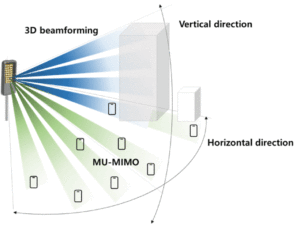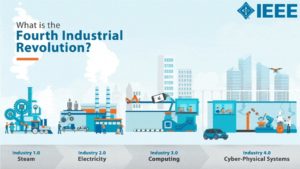The ever-increasing demands for mobile broadband and expansion to vertical industries (automotive, satellite, internet of things) continue driving the development of wireless technology. The next major step in the evolution of 5G towards the sixth generation (6G) mobile networks is called 5G-Advanced. Built on the strong 5G foundation, 5G-Advanced will introduce capabilities to boost performance and expand new use cases for 5G technology. At the same time, several forward-looking topics as part of 5G-Advanced will also build the bridge toward 6G technology development.
In an article published in the IEEE Journal on Selected Areas in Communications, researchers summarize and overview many exciting developments in 5G-Advanced towards 6G. Providing a comprehensive overview of 5G-Advanced development, the authors introduce the prominent state-of-the-art technologies and identify key evolution directions for future research and standardization.
5G-Advanced: Key Technologies
According to the authors, while it is still imperative to continue evolving 5G in response to the ever-increasing immediate commercial needs, it is also necessary to start exploring new areas to unleash the potential of 5G. This is particularly important considering the mounting interests and efforts of 6G in academia and various alliances. The proposed evolution directions are generally balanced in terms of the following:
- Mobile broadband evolution vs. further vertical domain expansion;
- Immediate vs. longer-term commercial needs; and
- Device evolution vs. network evolution.
After introducing the massive MIMO evolution in 3GPP standards and discussing the multi-user (MU-MIMO) related aspects, the authors describe the evolution of massive MIMO towards 6G.
5G was standardized assuming a two-dimensional array with many antenna elements, often called massive MIMO, so beamforming and spatial multiplexing can be performed flexibly utilizing both horizontal and vertical directions. This approach was first taken in the full dimension MIMO (FD-MIMO) in LTE-Advanced Pro and was exploited in the first version of the 5G standard.

Illustration of the concept of Massive MIMO.
The article outlines the prominent 5G positioning, topological, XR, sidelink, AI/ML, and duplex evolutions as they relate to the future 6G outlook.
Energy Efficiency Evolution Towards Green Networks
The authors also focus on power consumption in wireless systems, which they see as a critical design aspect. There are various research directions on the improvements of network energy consumption—one of the significant factors to investigate is the impact of network scheduling solutions. Besides the classical network performance, network power consumption is also impacted by the network scheduling approach, especially in 5G. It is noted that when considering energy efficiency improvements, the energy cost for the enablers themselves, such as AI/ML training and inference, must also be considered.
Future 6G Aspects
Over the past several years, the world has witnessed a rapid deployment of commercial 5G networks that provide high-speed, low-latency connectivity for a wide range of use cases. New services with higher performance requirements will continue to emerge, calling for the continuous evolution of cellular technology. The innovative technology components investigated in 5G-Advanced evolution are essential precursors to key 6G building blocks, making 5G-Advanced a vital step in developing cellular technology towards 6G.
According to the authors, 6G will require even more data processing at the edge of the network-computing continuum for critical services, which can be achieved only with the tight cooperation of a programmable network infrastructure. Another aspect that raises unprecedented challenges to system design is the interactive services based on distributed intelligence to support decision-making. This requires that an increasing amount of data, generated by massively deployed ubiquitous devices at the edge, is moved throughout the continuum to promptly build knowledge. A close connection between application and network layers offers the opportunity to develop semantic approaches—increasing efficiency, reducing energy consumption, and improving users’ quality of service.
Interested in acquiring full-text access to this collection for your entire organization? Request a free demo and trial subscription for your organization.
Interested in expanding your knowledge on Wireless Communications? IEEE offers continuing education with the Intensive Wireless Communications Course Series.





